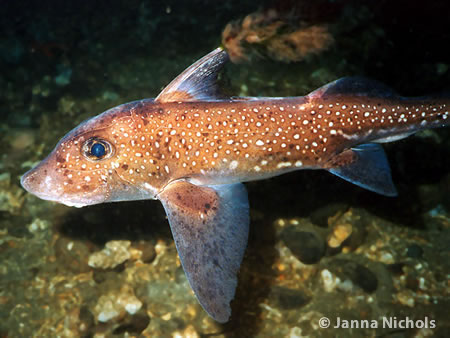
The other major subgroup of cartilaginous fishes,
the subclass Holocephali, comprises about
twenty-five or thirty living marine species, most
or all of which are placed in a single family, the
Chimaeridae. They have a single gill opening on
each side, like the bony fishes, but unlike them
have a soft (rather than bony) gill cover. These
fishes, commonly called chimaeras or ratfish (because
of their long, slender tails), live and feed on
the ocean bottom, usually in deep water. They
have pavementlike teeth for crushing their mollusk
and crustacean food, and they have a venomous
spine on the leading edge of the first dorsal fin
(the forwardmost of the unpaired fins on the upper
surface of the body) for defensive purposes.
Male ratfishes have a fingerlike barbed clasper, of
unknown function, on the top of the head, and
two pairs of claspers on the ventral (belly) side of
the body.At least one pair of these ventral claspers
is involved in mating. The female lays eggs in
leathery capsules somewhat like skate egg cases.
Ichthyology
The study of sharks, rays, and related species is
part of the larger discipline known as fish biology,
or ichthyology. This science has its origins in the
writings of Aristotle more than twenty-three centuries
ago. He was the first to report, for example,
that the sex of sharks can be determined by the
structure of the pelvic fins, that is, by the presence
of claspers in the male. Aristotle also contrived
some rather fanciful interpretations of shark anatomy
and behavior, as in his explanation for the
fact that the shark mouth is on the under side of
the head, far back from the tip of the snout, unlike
the mouths of most other fish. In his view, this
made it difficult for the shark to feed on its prey,
requiring it to turn on its back, and thus nature allowed
some chance for the poor animals to escape
the jaws of this ravenous predator.
Modern study of cartilaginous fishes, like fish
biology in general, involves several disciplines.
Ichthyology, or systematic ichthyology, is particularly
concerned with the naming and classifying
of species and higher taxa (taxonomic categories)
and determining their interrelationships. Living
cartilaginous fishes are probably better known
(that is, more of the extant species have been
discovered) than living bony fishes, simply because
they tend to be larger, more conspicuous,
and less secretive.Yet it was not until 1976 that one
of the largest shark species, a deep-water filterfeeding
species called the megamouth shark
(Megachasma pelagios), was discovered near Hawaii.
There may exist many additional Chondrichthyes
species in deep ocean waters and remote
coral reef areas.
Chondrichthyes systematics (that is, the classification
of the fishes) has undergone many
changes and revisions as more has become known
about fossil representatives and about the characteristics
of the anatomy, biochemistry, and the like,
of the living species. Studies of fossil cartilaginous
fishes are limited almost entirely to samples of
teeth, since these are virtually the only body parts
durable enough to be preserved in the fossil record.
Nevertheless, there is enough information in
the characteristics of the teeth so that knowledge
of the interrelationships of fossil species, both
among one another and with living species, is
quite advanced. It is known, for example, that the
enormous hand-sized fossil teeth of Carcharodon
megalodon, which lived about twenty million years
ago, are so similar to the smaller teeth of the white
shark (Carcharodon carcharias) that they both belong
in the genus Carcharodon.
Systematic study of modern species requires
collection of specimens, generally by means of
nets, traps, hooks, and lines, or spearing. Specimens
are then preserved in some way and maintained
in a museum collection. Entire specimens,
if they are relatively small, can be maintained in
diluted alcohol after fixation in formalin (formaldehyde
solution). Other specimens, especially
large ones, are dissected, and only certain parts
are preserved, particularly the head skeleton with
jaws and teeth. Certain new techniques provide
taxonomic information from samples of living tissue.
Karyotyping (analysis of the chromosomes),
protein analysis (determination of the amino acid
sequence), and DNA hybridization (estimation
of genetic similarities) are all techniques that
can elucidate interrelationships among the Chondrichthyes.
Other disciplines concerned with the
study of cartilaginous fishes include fisheries biology
(the science of management and exploitation
of commercially important fish species) and comparative
physiology.
Ratfish Facts
cartilage: a gristlelike supporting connective
tissue that forms the entire skeleton
of cartilaginous fishes
Chondrichthyes: the scientific name for
the taxonomic group, or class, in which
the jaw-bearing cartilaginous fishes are
placed; it includes sharks, rays, skates,
and ratfishes
Devonian: a geological period from about
400 million years ago to about 350 million
years ago; during this period, ancestral
sharks were abundant and diverse
placoid scales: hard, toothlike scales,
sometimes called denticles, that are embedded
in the skin of most sharks, rays,
and skates
Silurian: a geological period from about
440 million years ago to about 400 million
years ago; the first jawed fishes appeared
during this period
vertebrate: a member of the chordate
subphylum Vertebrata, characterized by
the possession of a vertebral column
made of cartilage or bone
Other popular Animals
Photo Gallery of - Ratfish
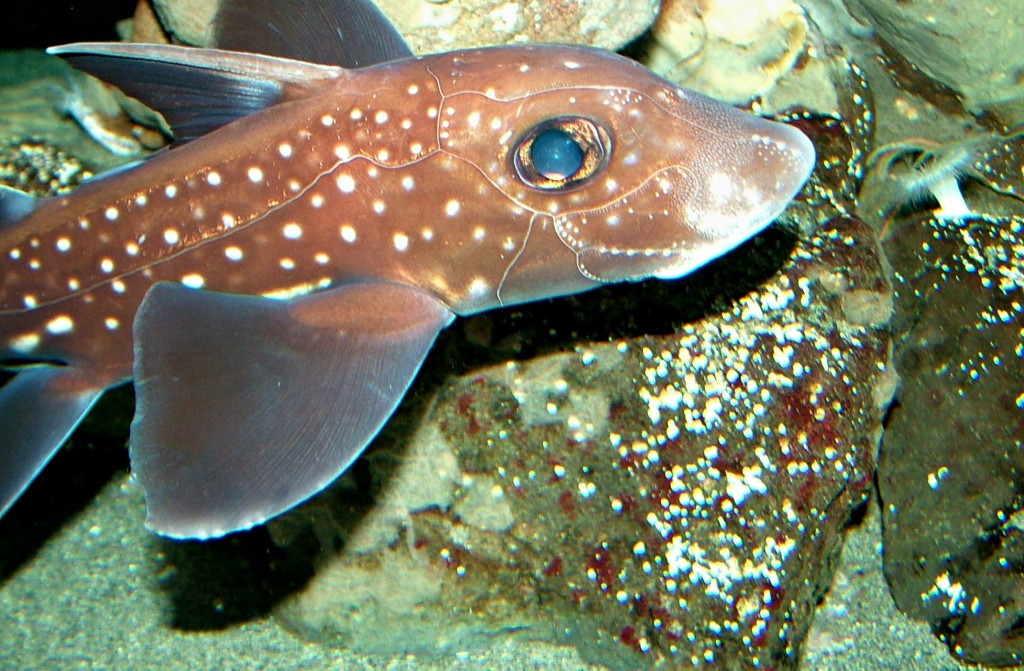

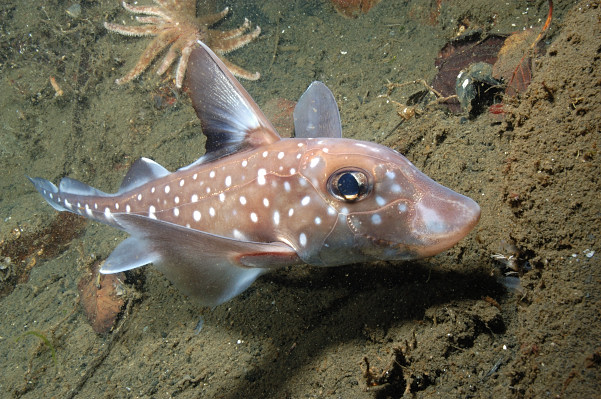

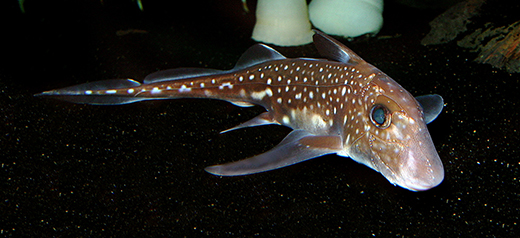

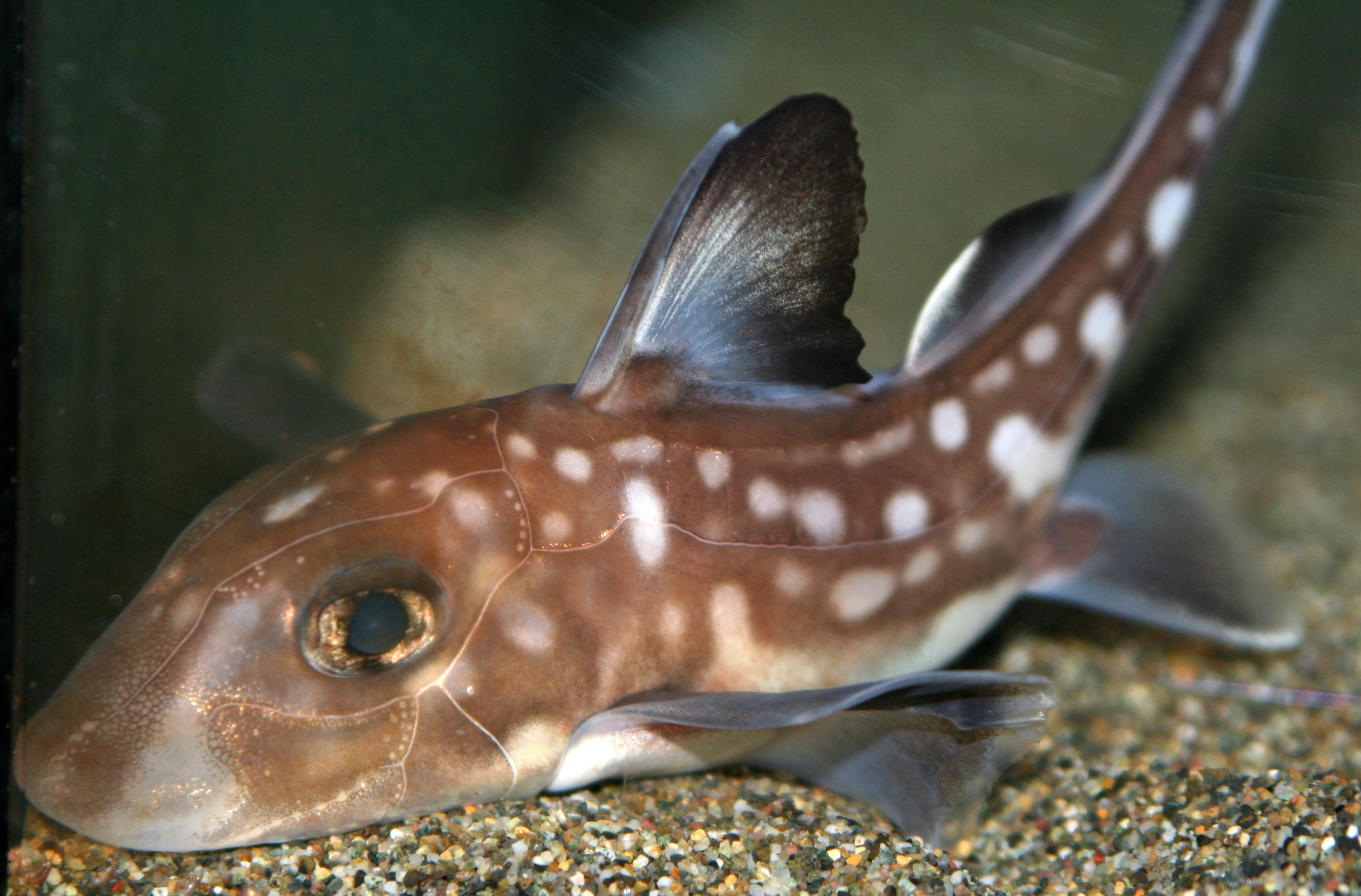

 Animalia Life
Animalia Life